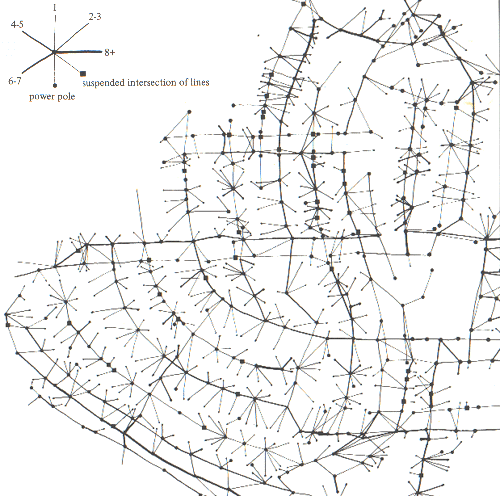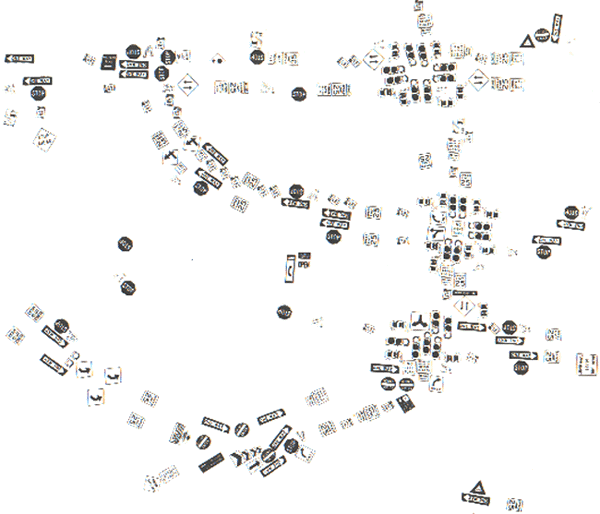


NPR, This American Life: Denis Woods' map of
his neighborhood's power grid
|

NPR, This American Life: Denis Woods' map of
his neighborhood's street signs
|
Samuel Wan is an accomplished Flash programmer and interaction designer. A while ago I pointed to his fisheye menu which, like the new Mac OS X dock, is both an elegant visual effect and a clever way to manage scarce screen real estate. Today Samuel points to this 1998 episode of This American Life, whose description begins:
Five ways to map the world. We bring you five stories -- one about people who who map the world the traditional way -- by drawing maps of things you can see. The other stories are about people who map the world using smell, sound, touch, and taste. The world re-drawn, by the five senses.
Like Samuel, I was most captivated by the first act of the show, featuring Denis Wood, author of Seeing through Maps: The Power of Images to Shape our World View and The Power of Maps. As Samuel mentions, and as is described in the episode but not shown on NPR's website, Wood had drawn maps that reveal a strong positive correlation between the number of pumpkins on porches in his neighborhood, and the number of times those houses (or their inhabitants) are mentioned in the neighborhood newsletter over a period of years. Apparently both numbers measure social capital.
Wood lovingly handcrafts these maps. Evidently he gleans the citation data from the neighborhood newsletter by reading the issues and recording each citation manually. For another information mapper, Tim Bray, whom I interviewed recently for InfoWorld, XML is a power tool for ripping through the data. But the goal in both cases is the same. Built into the human brain is a high-performance pattern recognition engine, and nothing can feed that engine data faster than maps can.
Update. Serendipitously, this just in from Brian Jepson:
A few items related to geography caught my eye today:[ Brian Jepson's Radio Weblog]
- Vintage topo maps online
- Open GIS Consortium
- Geotools.Net, a set of .Net classes useful when handling geographic information. (via .netWire)
Further update. The GeoURL maps are starting to fill up and become interesting. Dropping in on a lonely red dot in the middle of Canada, I found some gorgeous QuickTime VR presentations by Michael Zajac.
Former URL: http://weblog.infoworld.com/udell/2003/01/15.html#a573